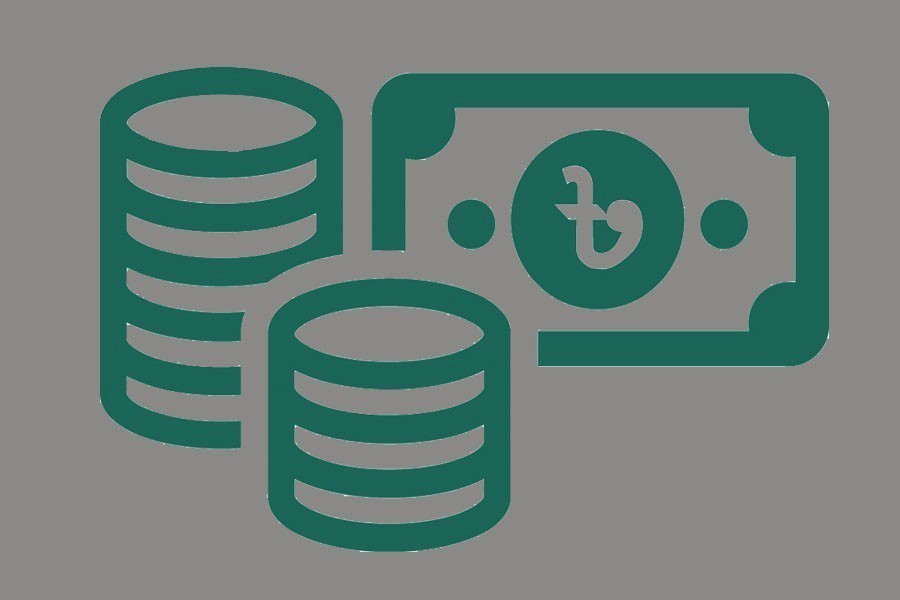Lower-denomination coins, stretching from Poisha 01 to Poisha 50, which are in vogue but already driven out from the market, are equivalent to around Tk 570 million.
Officially they are valid and legal tenders as the government has yet to demonetize the minnows. And their uses in some cases are still there. Traders or consumers use the rounding formula to solve the problem. But the coins are just in the accounting only, not available in real sense.
When the amount is multiplied by its estimated changes of hands, it comes to nearly Tk 2.90 billion. On the money market, this type of changing hands is called "money multiplier" effect which amplifies or increases the base value of currencies.
A multiplier of over 5, for instance, would increase five-fold the base figure, i.e., Tk 1.0 will actually work as Tk5.0 as a medium of exchange on the market due to this effect.
As per central bank statistics prepared exclusively for the Financial Express (FE), Poisha-1 has 6.7295 million pieces, Poisha-5, 23.4443 million, Poisha-10, 6.9401 million, Poisha-25, 18.6387 million and Poisha-50, 0.4483 million pieces in circulation, as of May 31, 2022. But these are never seen at least in many decades.

Central bankers say the amounts are in circulation and remained in the stores, either in the central bank's vaults or in any other vaults belonging to state-owned banks or private commercial banks.
An official at the central bank told the FE that a portion of such coins is available in the central bank's vaults to meet some type of payments, for example, payment for contractors.
But, its chief economist, Dr Habibur Rahman, told the FE in August 2022 that the coins had lost their usability and that's why not seen on the market.
Referring to the advanced economies, Dr Rahman said the economies do have uses of the lower- denomination coins. "Bus tickets and metros have huge uses of such coins in the western economies."
On the other hand, many believe that lots of the coins claimed by the central bank either melted down or were damaged over time. Coin has an intrinsic or melting value ranging between 60 and 70 per cent. When the value increases, some unscrupulous traders convert those.
"A part of such coins have already melted down for more value and partly has been damaged over time," said Dr Ahsan H. Mansur, executive director at the private think-tank PRI (Policy Research Institute of Bangladesh)
Dr Mansur says a portion may been kept in the vaults of some banks, including the central bank vaults.
He feels that there is no need of recirculation of such currencies as the small-denomination coins do not have a usage in the economy.
Mr Mansur, who worked as division chief in the Middle-east of the IMF (International Monetary Fund), told the FE: "I think this is high time to revise the lowest currency Poisha-1 as this is no more in reality in the economy."
He suggests Tk 1.0 in place of Poisha-1 as the lowest unit of currency for Bangladesh.
Echoing the same, Dr Shah Md. Ahsan Habib, a director at the Bangladesh Institute of Bank Management (BIBM), an institution owned by Bangladesh Bank, said, "Tk 1.0 should be the lowest unit of currency of Bangladesh as the fraction of Tk 1.0 has no value in the market".
However, this needs to be adjusted with other issues on the financial market. Currently, each stock price is Tk 10, as per an order issued by the securities regulator -- Bangladesh Securities and Exchange Commission -- in 2011 to make a uniform system. So, when Tk 1.0 will be the lowest unit, its face value needs to be adjusted upwards. "Reverse stock split from Tk 10 to Tk 100 needs to be made.''
This is important in a sense that uses of Poisha 10 is common in trading in stocks. The use of Poisha-10 is also found in interest calculation and other investment returns. So all should make at least Tk 1.0 as the lowest unit.
But economists were divided as to whether such demonetization will push the inflationary pressure on the economy or not. For this reason, some argued for Poisha-50 to be the lowest unit of currency.
Dr. Masrur Reaz, chairman at the Policy Exchange of Bangladesh, an independent think-tank in the country, says, "Considering the importance of the fractions, it should be Poisha-50 (not Tk 1).
Dr Masrur, who worked as an economist at the private-sector arm of the World Bank - IFC--or the International Finance Corporation, argues that an inflationary pressure may surface once Tk 1 is made lowest unit of currency as manufacturers will inscribe Tk 1.0 instead of Poisha-30, Poisha-40 and so on.
On the wholesale market, Poisha or such fraction has implications. If a product price is Tk 9.30 and one buys 1,000 pieces, he needs to pay Tk 9,300. When its fractions are diminished he needs to pay for the same product and same quantity Tk 10,000 or Tk 700 up.
On the other hand, Dr Akteruzzaman, former adviser of the Bangladesh Bank and now director-general at the Bangladesh Institute of Bank Management (BIBM), a national training, research and education institute on banking, told the FE that it would not have any impact.
He argued that there are very limited products which now maintain retail prices in fractions.
However, the coins' weight varies on the denominations. The coins usually had weights between 0.51 gramme and 2.65 grammes.


